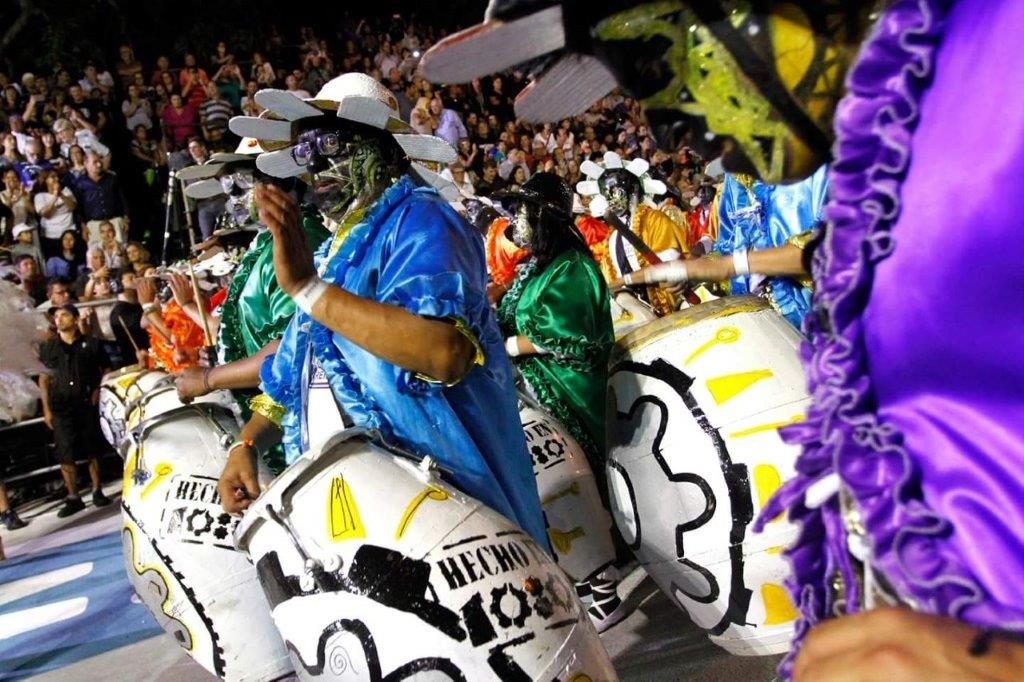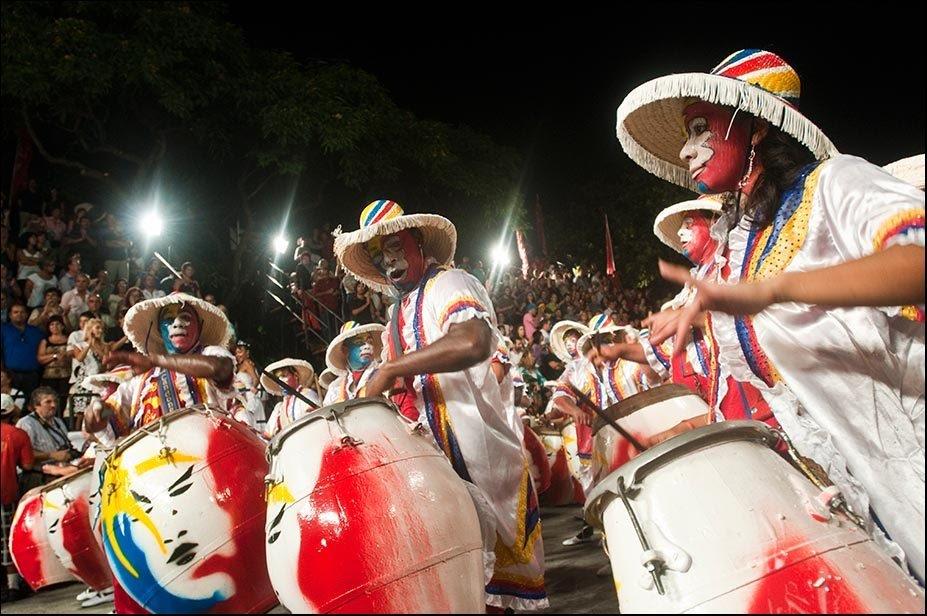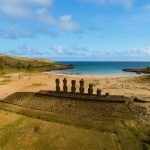Of the things you may know about Uruguay, you may know that Montevideo is the capital, a city of interesting architecture and history, and that it has the longest continuous sidewalk in the world, the 22 km-long rambla which follows the Río de la Plata, and is a main meeting place for strollers and mate sippers in the city. If you’re a treasure hunter, you may also know about Tristan Narvaja, which is the largest open-air flea market in the city, or if you’re a foodie, perhaps you’re excited to visit the Mercado del Pueblo, where visitors eat heaving meals with fresh-grilled meat. But for all that is known internationally about Montevideo, there is a strong cultural element that it is surprisingly easy to miss, and that is the celebratory cultural tradition of candombe (say: can DOME bay, not to be confused with candomblé, a an Afro-Brazilian religion).
About the Cultural Tradition of Candombe in Montevideo
Candombe is an expression of culture, art and music, linked to the presence of slaves of African descent who were brought to Uruguay during colonial times. After slavery ended, many people of African descent in Montevideo lived in what were then considered to be undesirable neighborhoods, such as the Barrio Sur, Palermo and Parque Rodó. These riverside neighborhoods took the brunt of the winter cold, and in the conventillos—closed off narrow streets where houses face each other—strong cultural ties were forged, and the tradition of candombe emerged, both among people of African descent, as well as other Uruguayans of modest means. The practice of candombe is associated with populist or left-leaning movements, of resistance and strength, and a calling back to ancestors. It is particularly notable that for many years, drumming by people of African descent was considered a form of witchcraft, and was therefore banned, which makes the “playing” of candombe an important reclaiming of a lost art.
Instruments of Candombe
Candombe is perhaps the most easily observed of the Afro-Uruguayan traditions. The instruments of candombe are three different types of barrel drums, wooden drums that bow out at the middle, and which are topped with a single skin. The drums are the repique, piano and chico drums, of varying sizes, and each of which is struck alternately with the hand and with a stick, on the side or on the skin, which is tuned before playing by placing it near a bonfire. Students and dancers of other Afro-Latin music will recognize the son clave, a 3-2 rhythm, (popular in salsa, for example) which you can hear continuously among the other rhythms being played.

The jefe de cuerda is the drum master, and he starts the beat that the other drummers will follow. It is not improvised, and there is a logic to the strength and speed at which he drums, which follows a specific musical structure. The drum corps will play at his rhythm, going neither faster nor slower, louder nor quieter, but following his lead.
Candomberos
Candomberos (people who participate in candombe) say that it is a conversation among drums, and that they are talking to each other. And drums are only part of candombe (though certainly the most audible). There are flag bearers, who maneuver enormous flags over the crowds and dancers, who wear costumes not dissimilar to some Carnaval costumes you may have seen. There is also an escobero, a man who sweeps away evil, while doing a type of dance carrying a broom, and the gramillero, a type of curandero (traditional healer) who is usually the oldest in the procession, and may be seen wearing a fake beard and carrying a bag full of healing herbs, and accompanied by an older mother figure, who waves a fan and carries a basket of baked treats, both tips of the hat to the colonial culture.
How to Experience Candombe
Nowadays in Montevideo, there are two main ways to experience candombe. One is to wander the neighborhoods mentioned above on weekend evenings (after about 6:30) from about September to February, when different comparsas (troupes) join to drum, dance and practice together as they make their way down Montevideo’s storied streets.
Candombe Parade in Montevideo
The second, and decidedly showier and more elaborate way to see candombe is to go to the (paid) candombe parade held in Montevideo every February called El Día de Las Llamadas. The llamadas refer to the drummer’s call (llamada) to other drummers, and the dancers wear elaborate costumes, and even the drummers are in matching outfits, often satiny robes over their street clothes, with sashes and ribbons.

At the Día de Las Llamadas, spectators pay for seats to watch the parade, at which points are given for different skills and performances, and where every year a winner is chosen. This is a great way to see the tremendous teamwork that goes into this musical and cultural tradition, which has been ongoing since 1956. Though the rules change from year to year, in recent years, each comparsa may now have up to 150 participants, and and each group’s procession (which happen simultaneously with other groups) have lasted up to 90 minutes.
In 2006, the government of Uruguay declared the 3rd of December to be the National day of Candombe, the Afro-Uruguayan culture and racial equality. Three years later, in 2009, the tradition of candombe was inscribed by UNESCO on the Representative List of the Intangible Cultural Heritage of Humanity, which brings the practice even more attention and solidifies its place as part of Uruguayan and world culture.
Everyone Can Learn Candombe
Candombe is really for everyone, and people of every age and race can be candomberos, regardless even which neighborhoods they are from. People pick it up through families, neighborhoods, or just by being interested, and there are schools where anyone can learn candombe, irrespective of age or gender. Candombe in Uruguay is not limited to Montevideo, and can be seen in other departments of the country. Though there are some commercial ways to see candombe, as part of larger dance performances, and of course the Día de Las Llamadas, to get a more traditional look at it, and for the ability to move as the music moves you, it’s a great idea to make the extra effort to go see some candombe processions live on the street.
Join us for a trip to Montevideo where you can experience Candombe!

